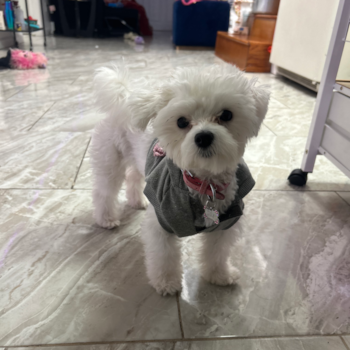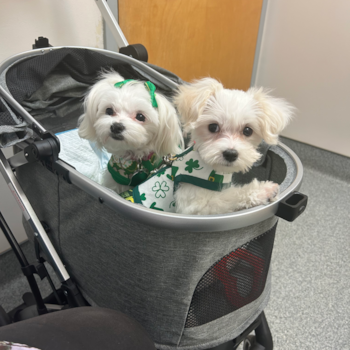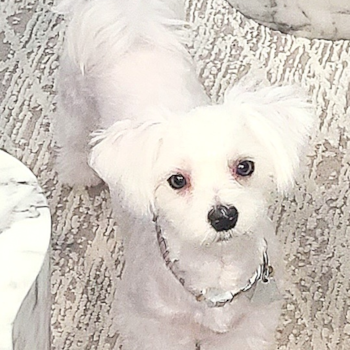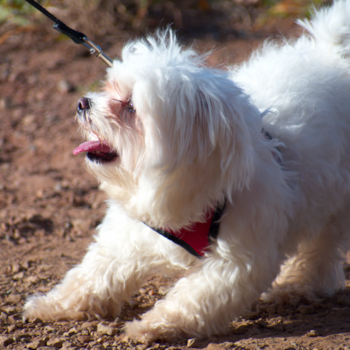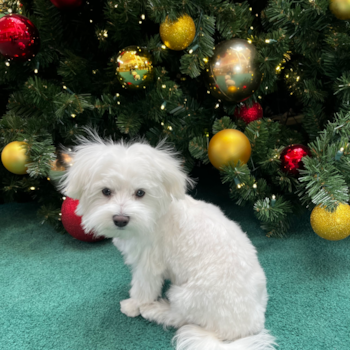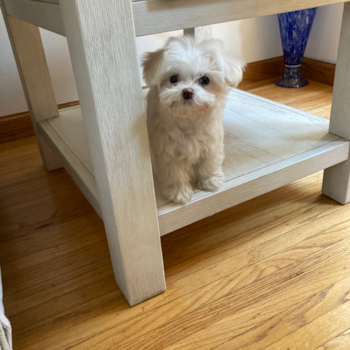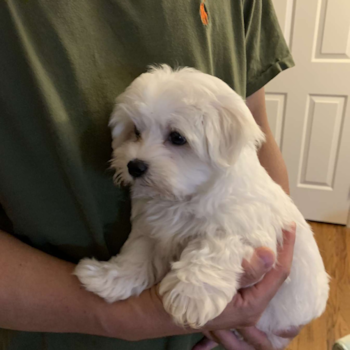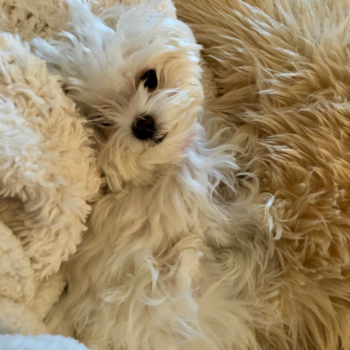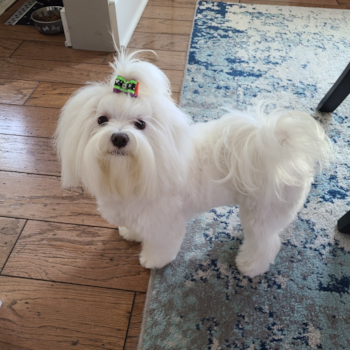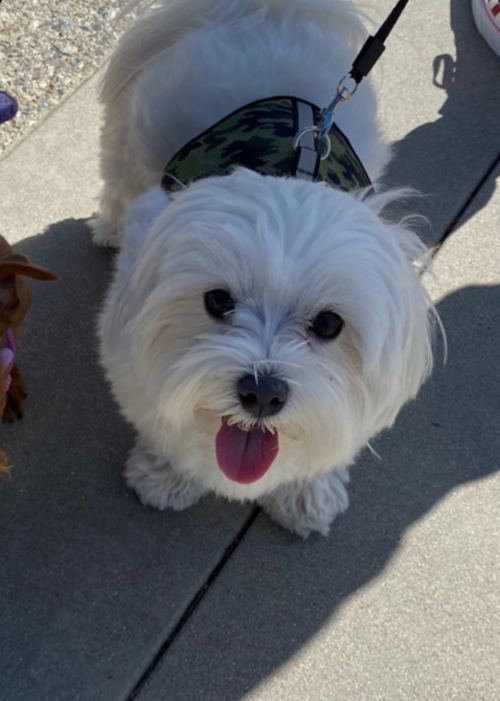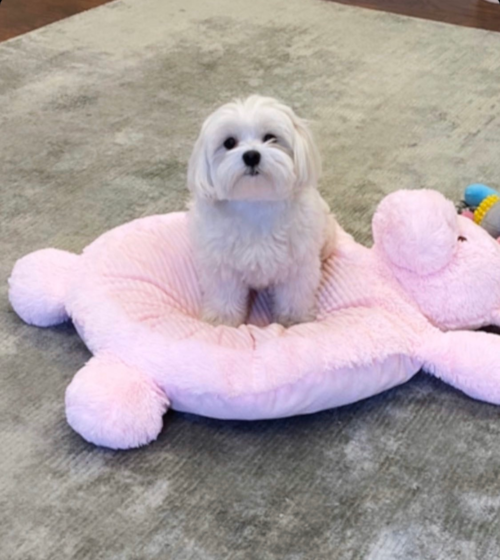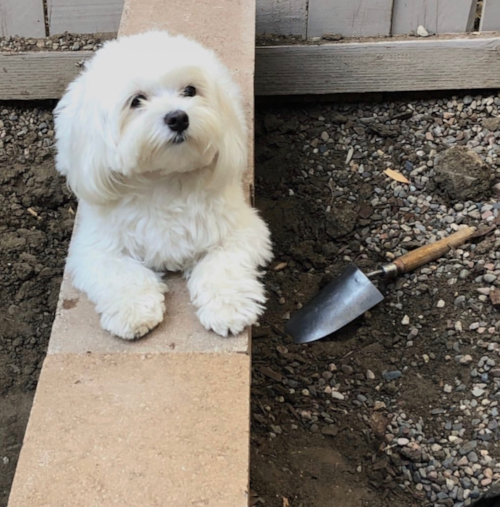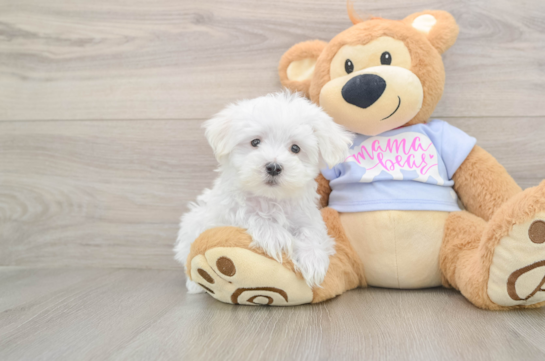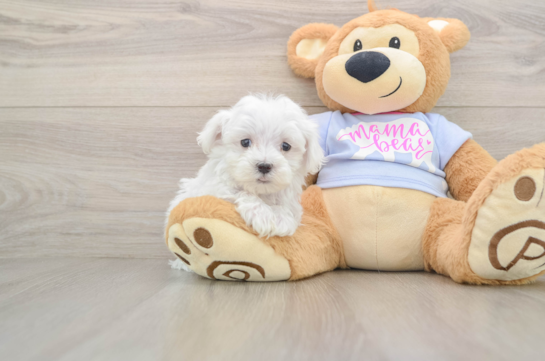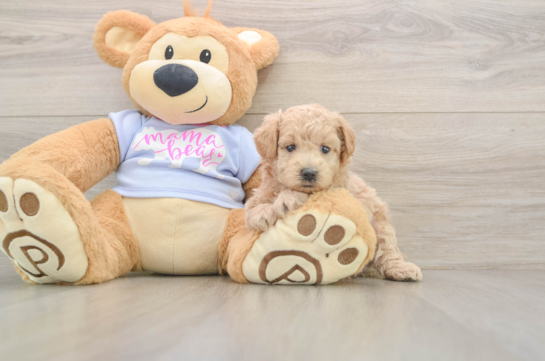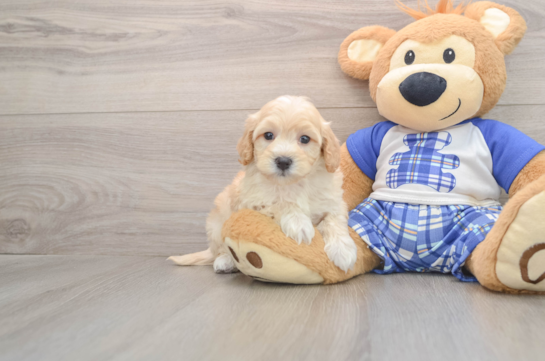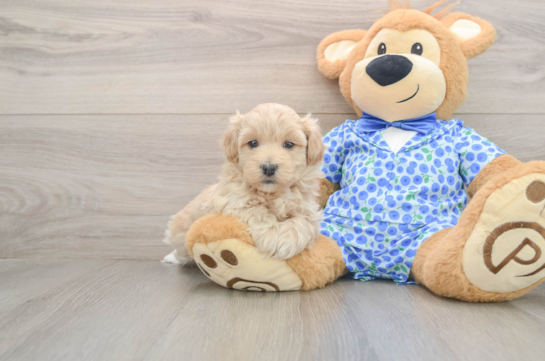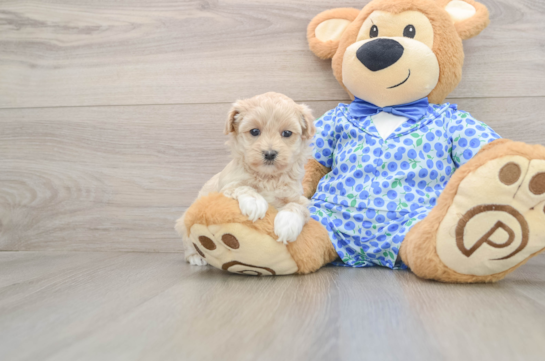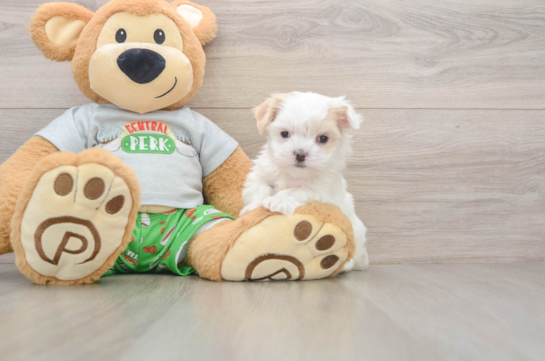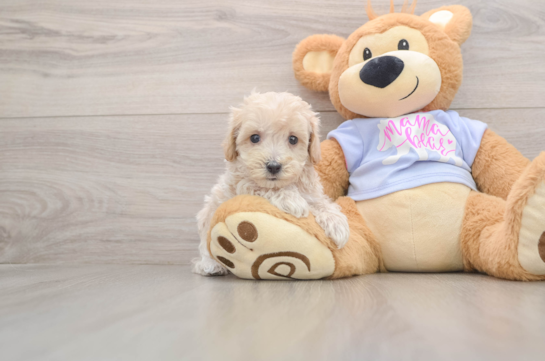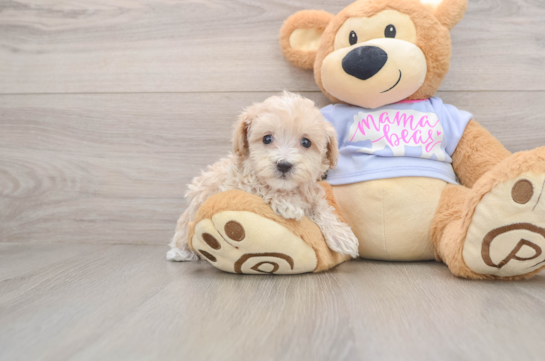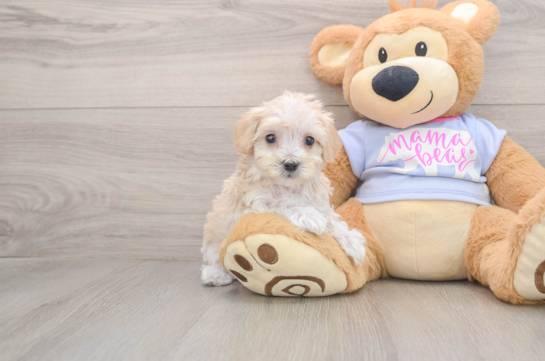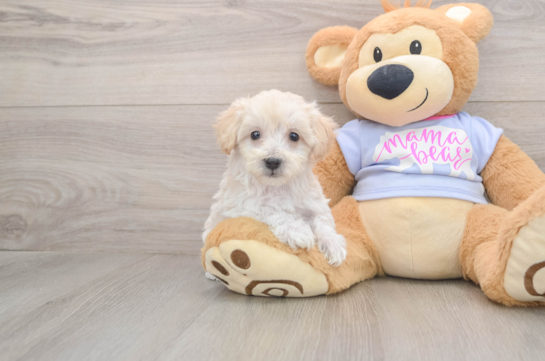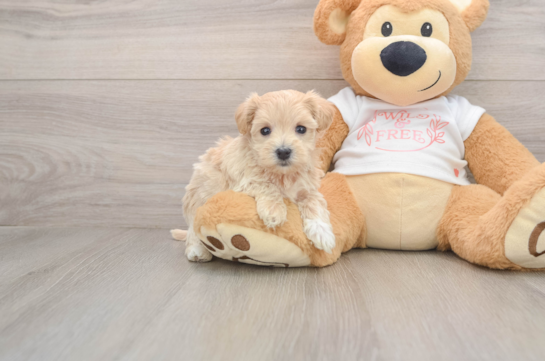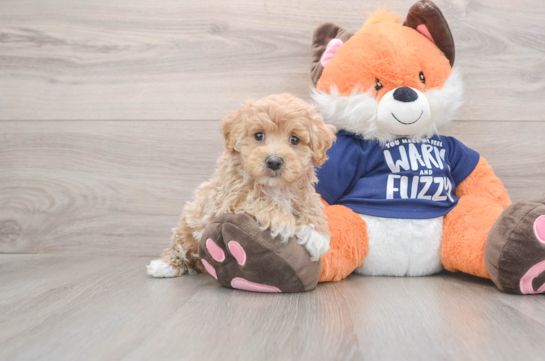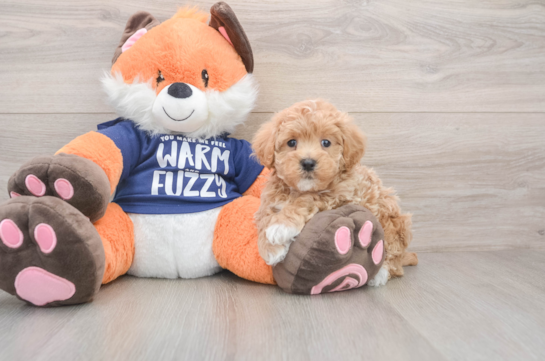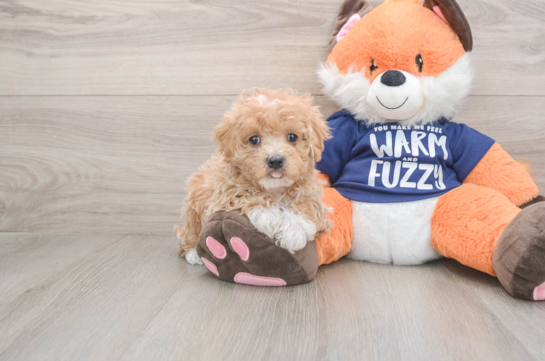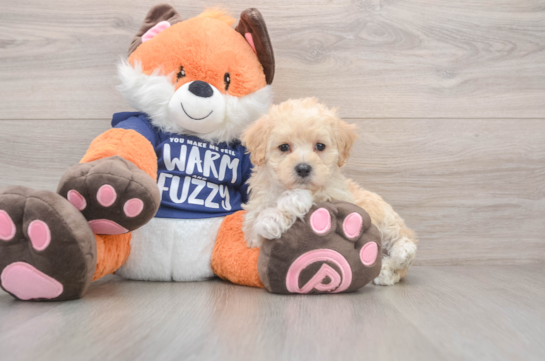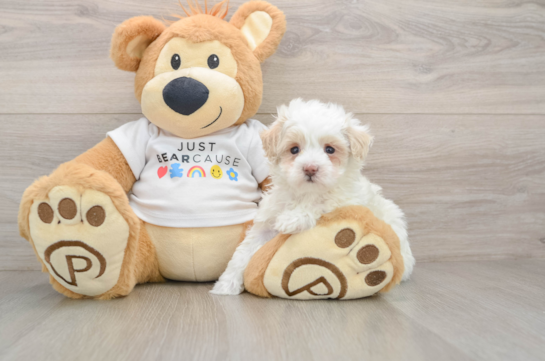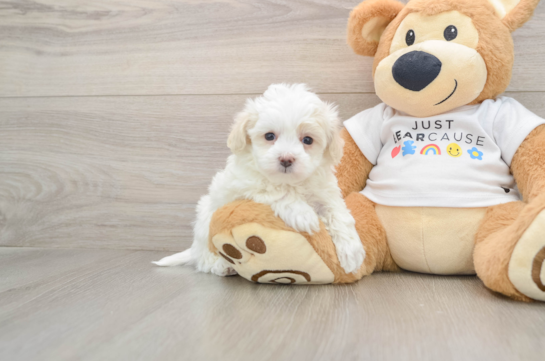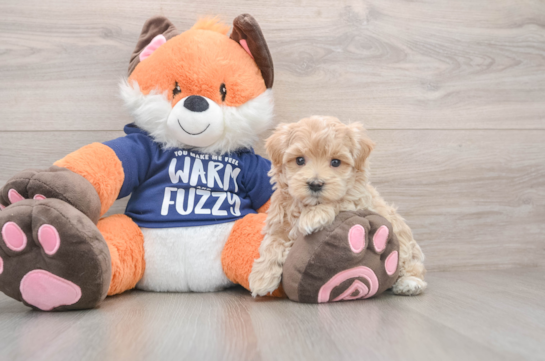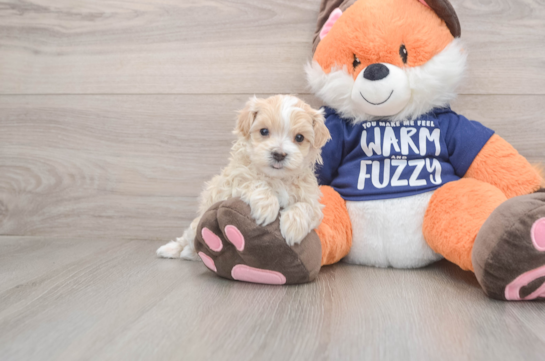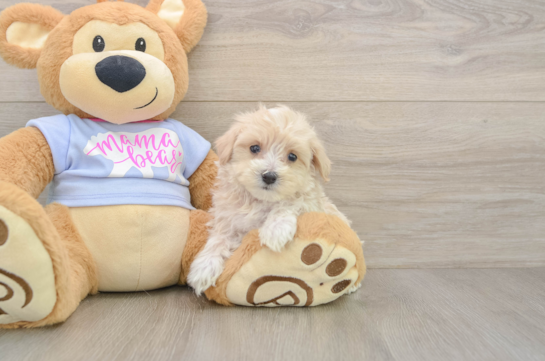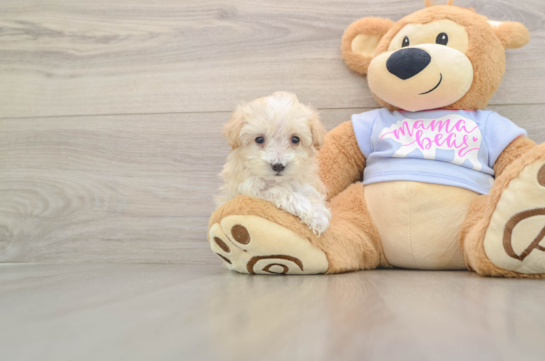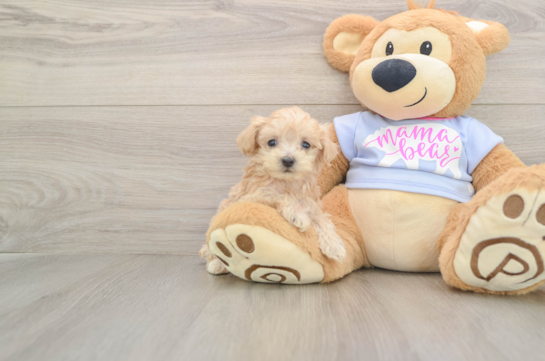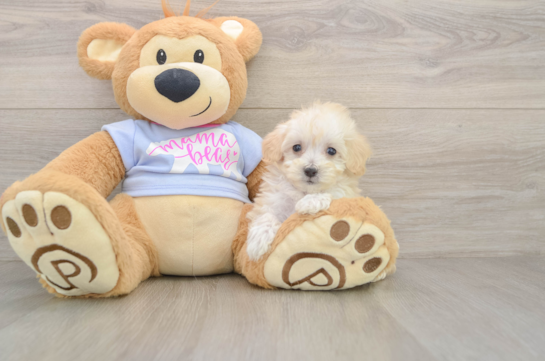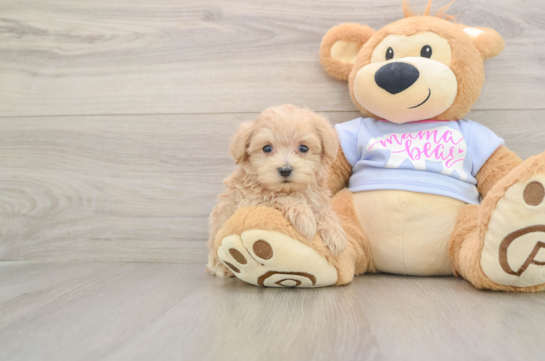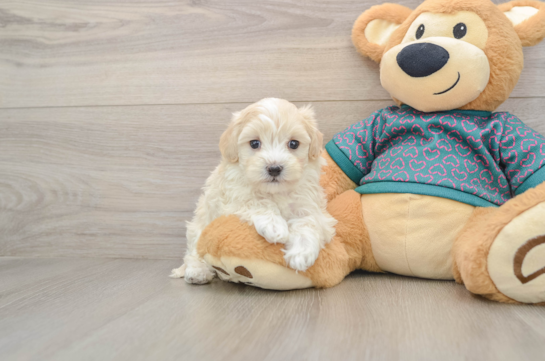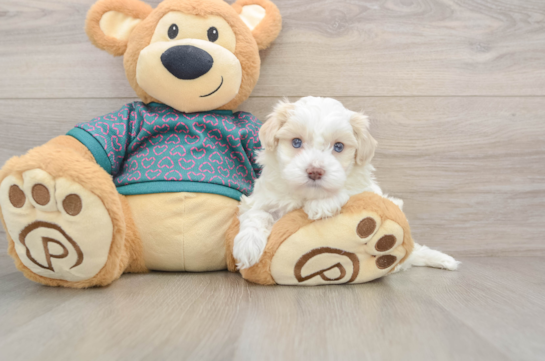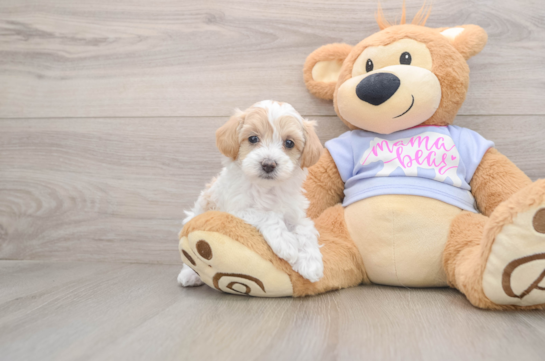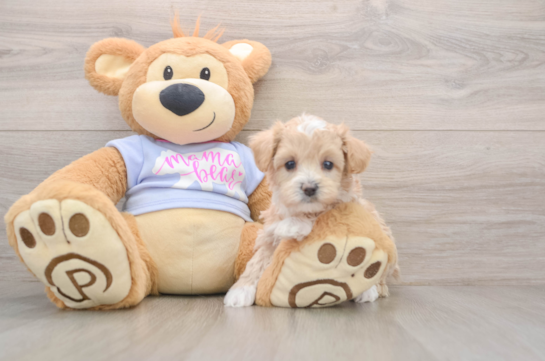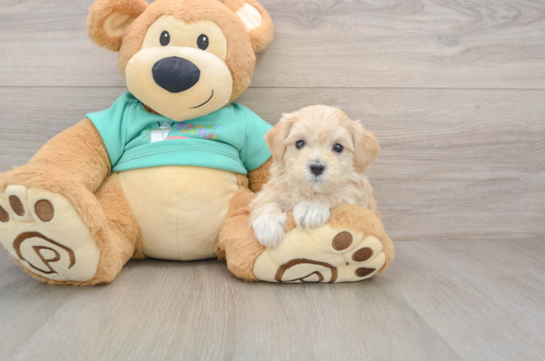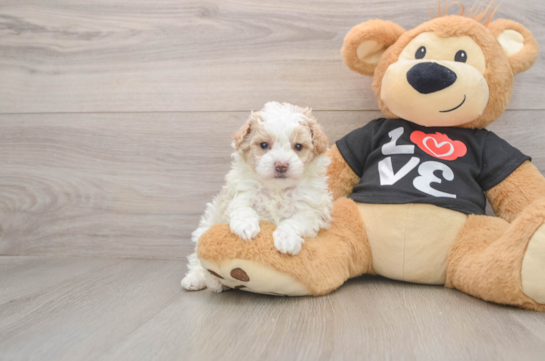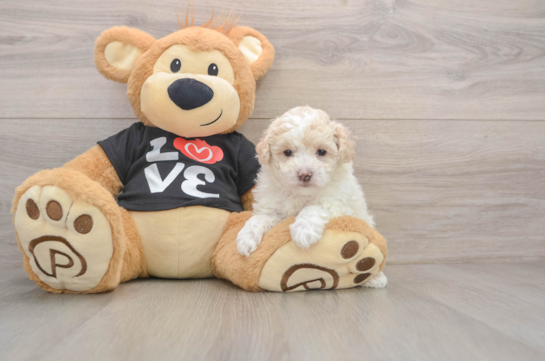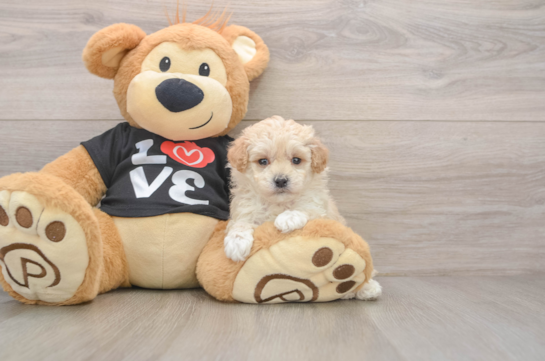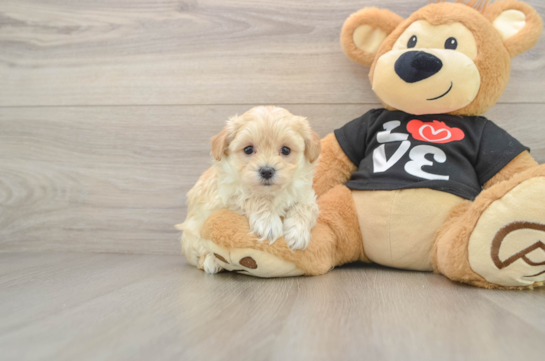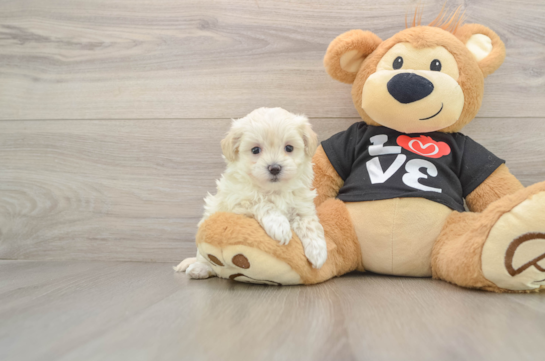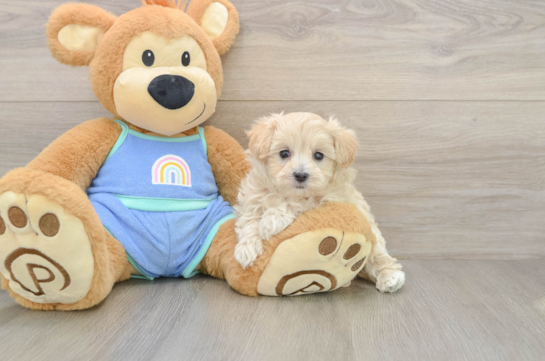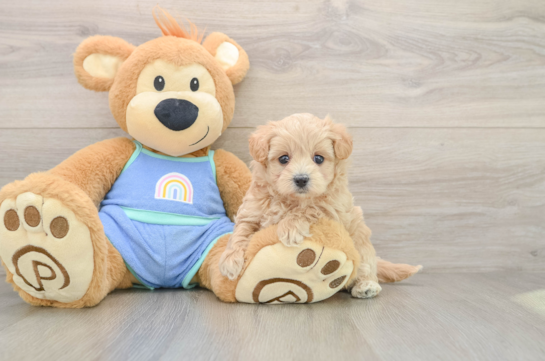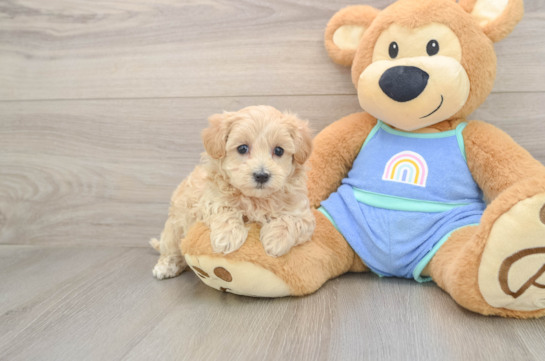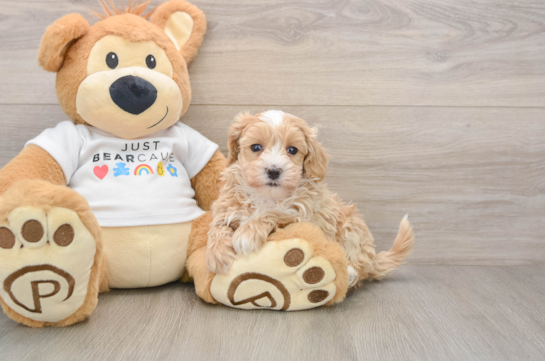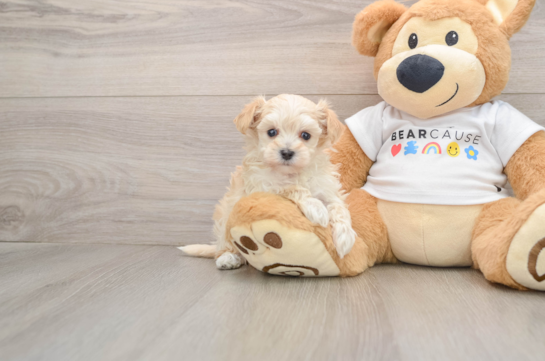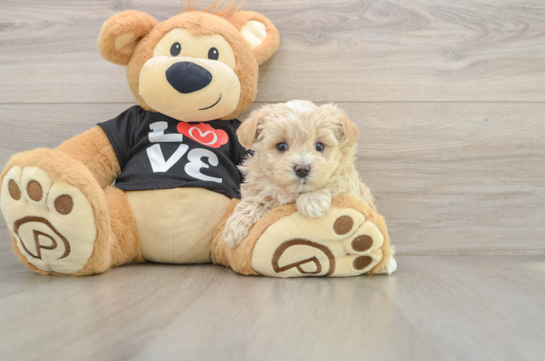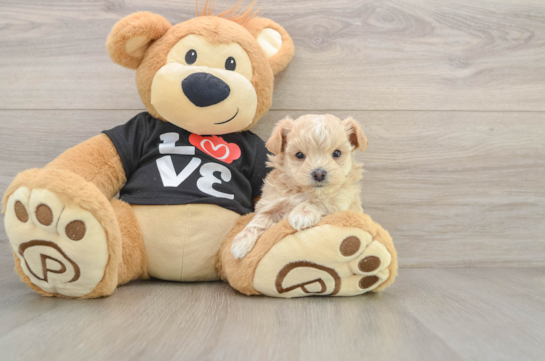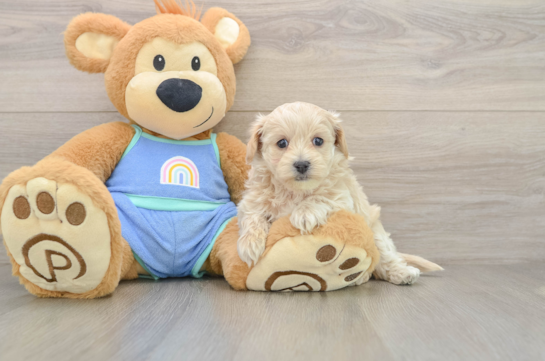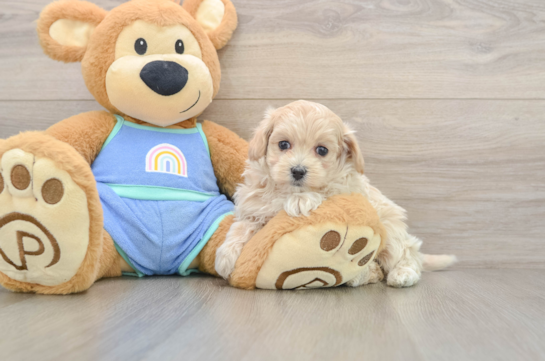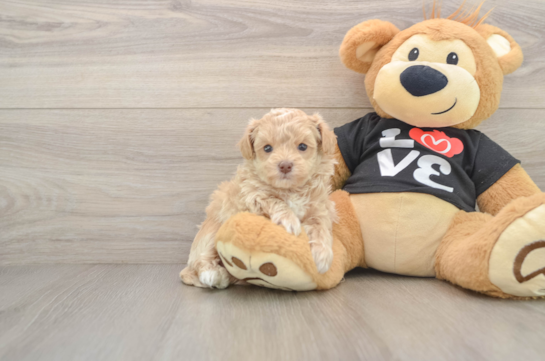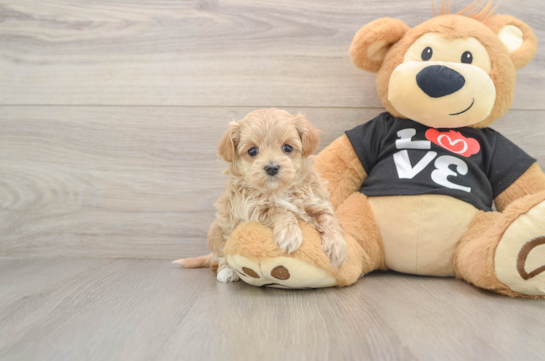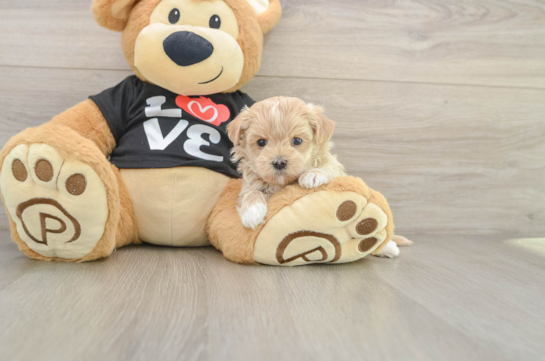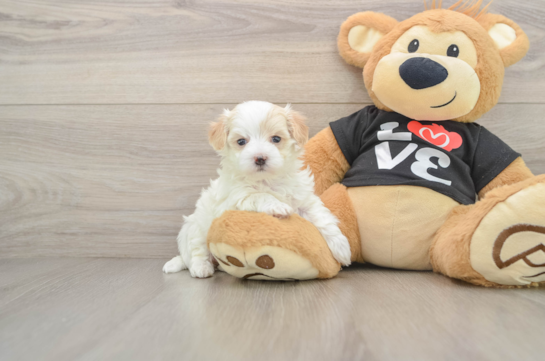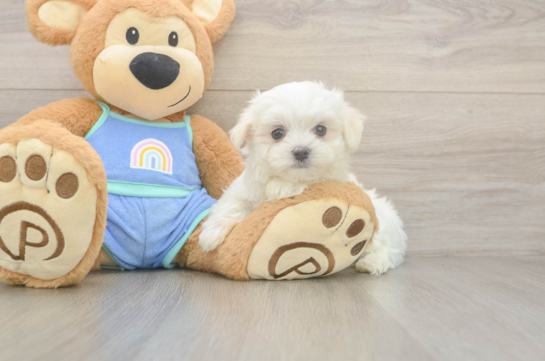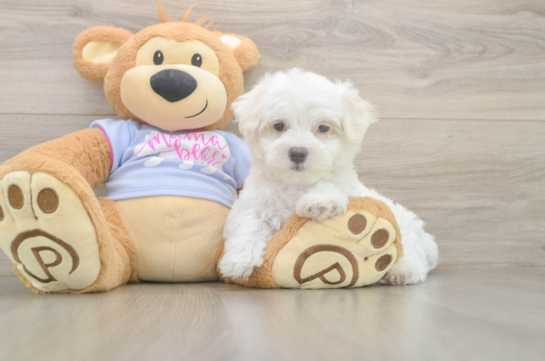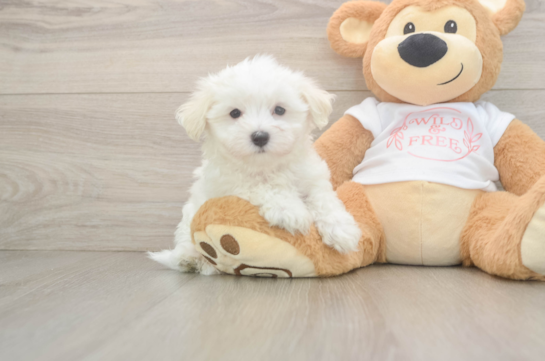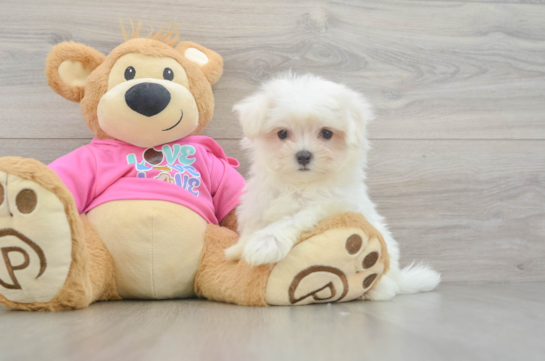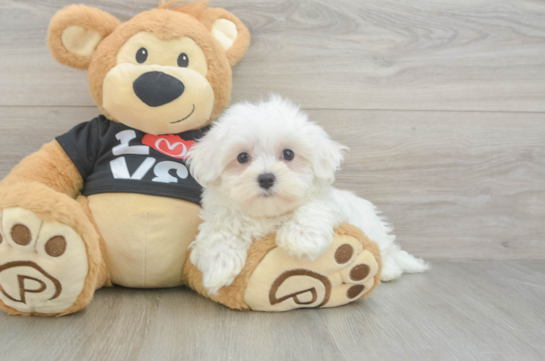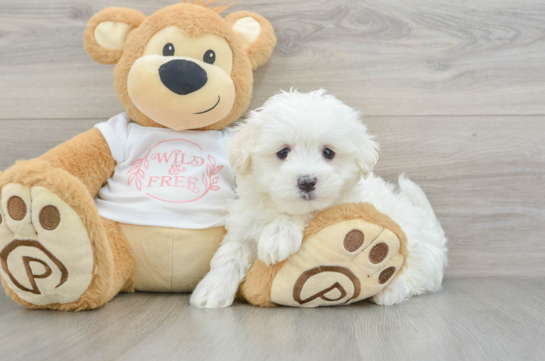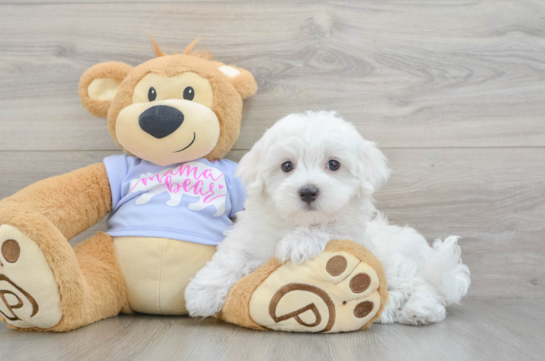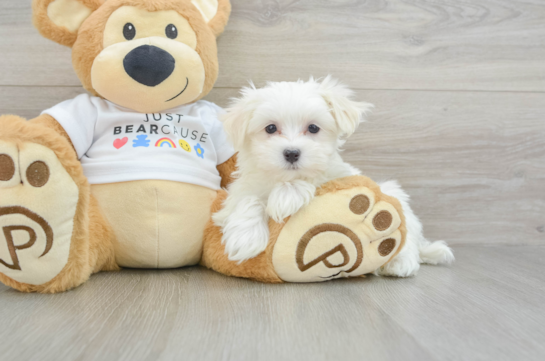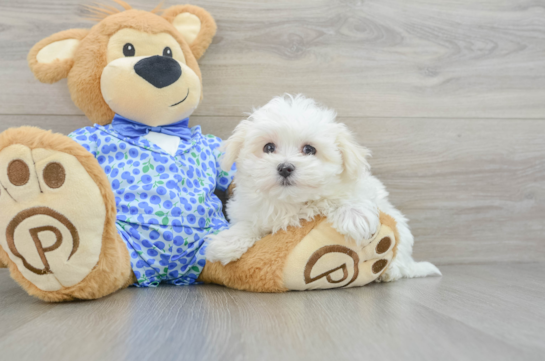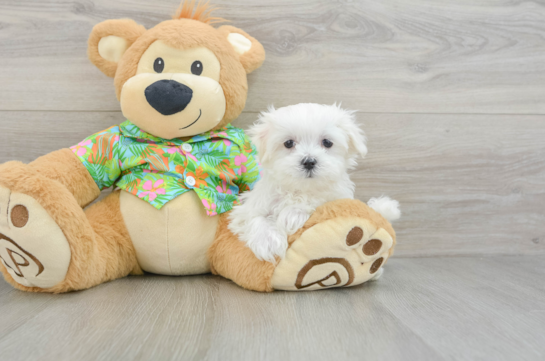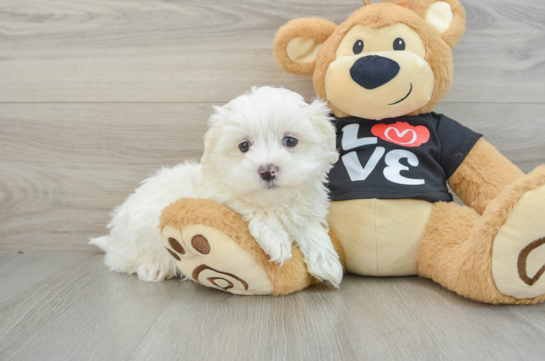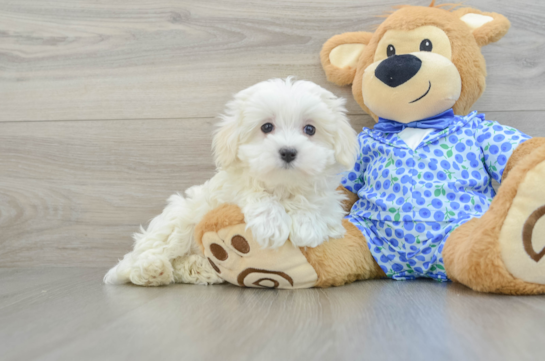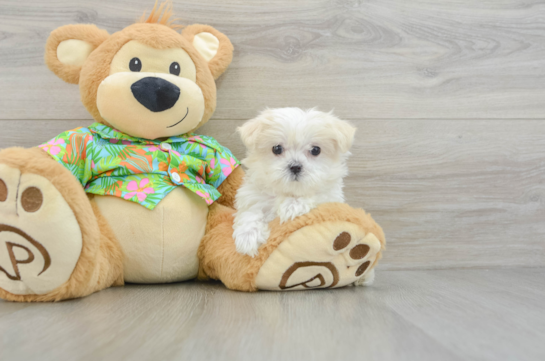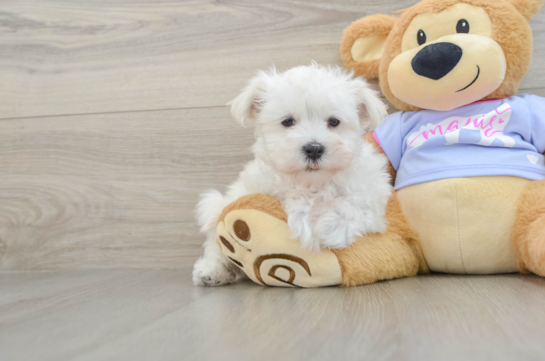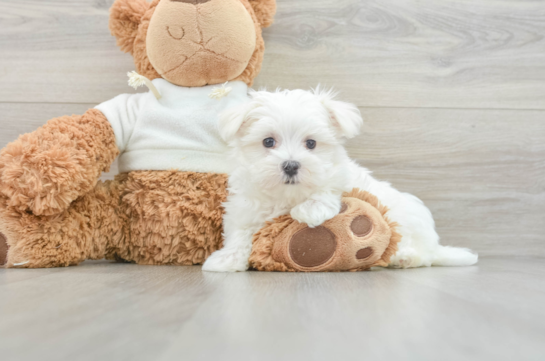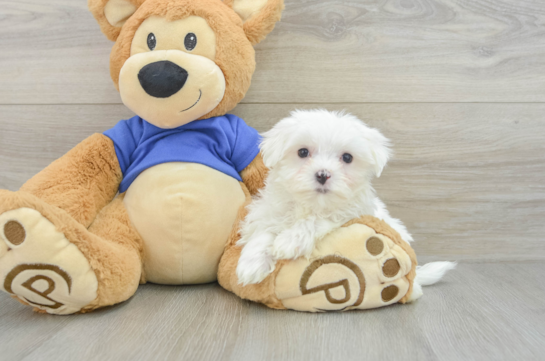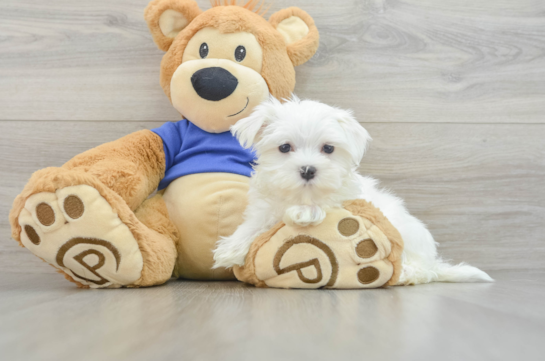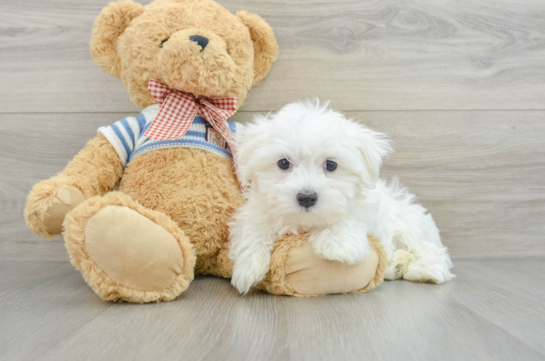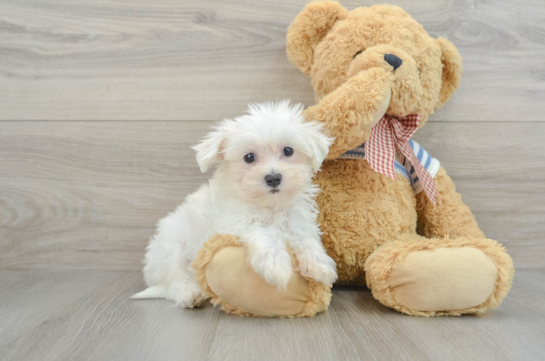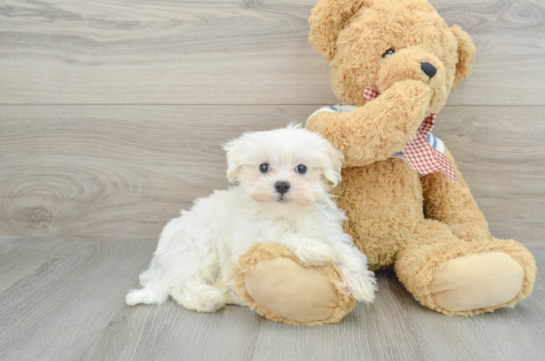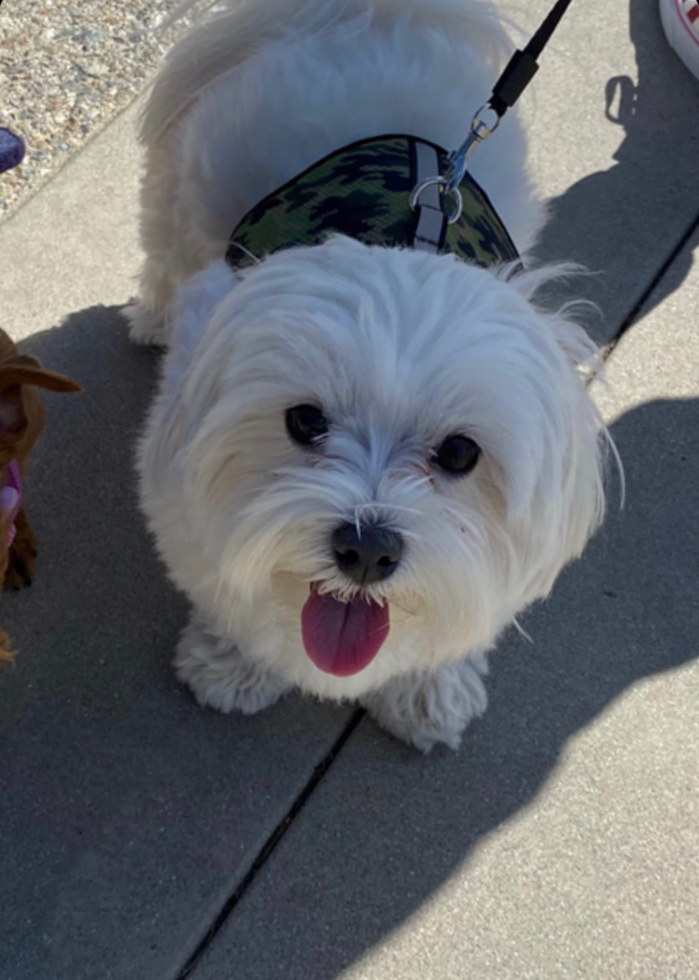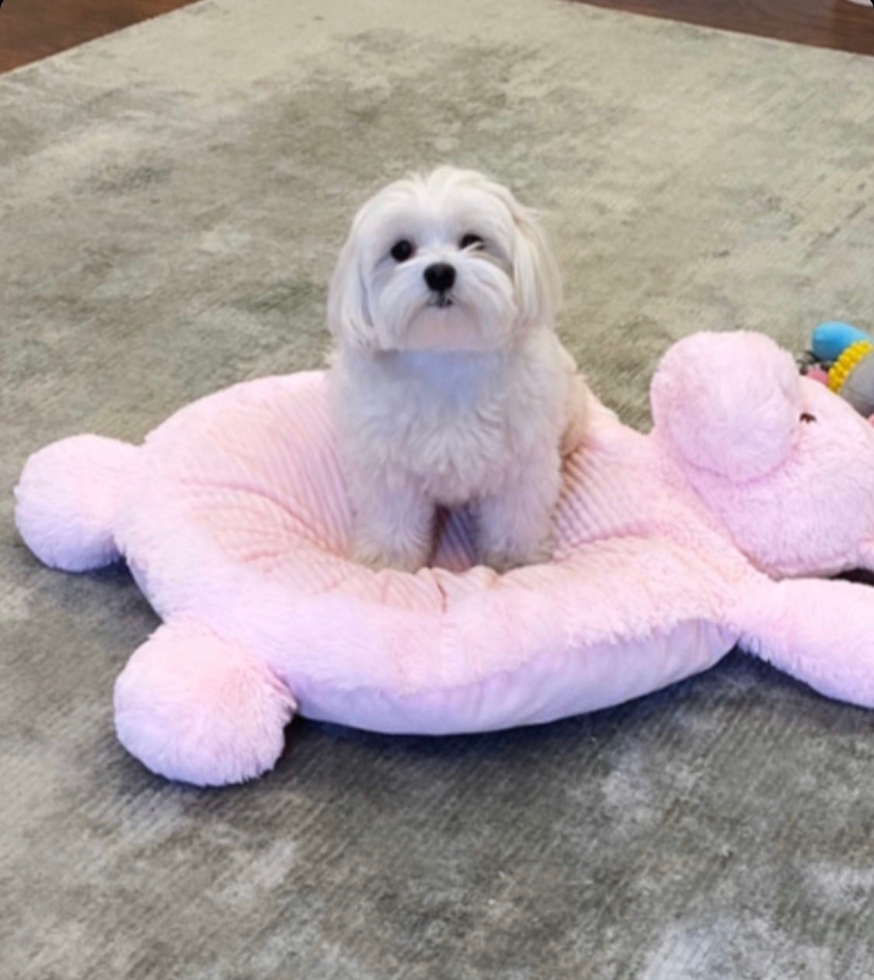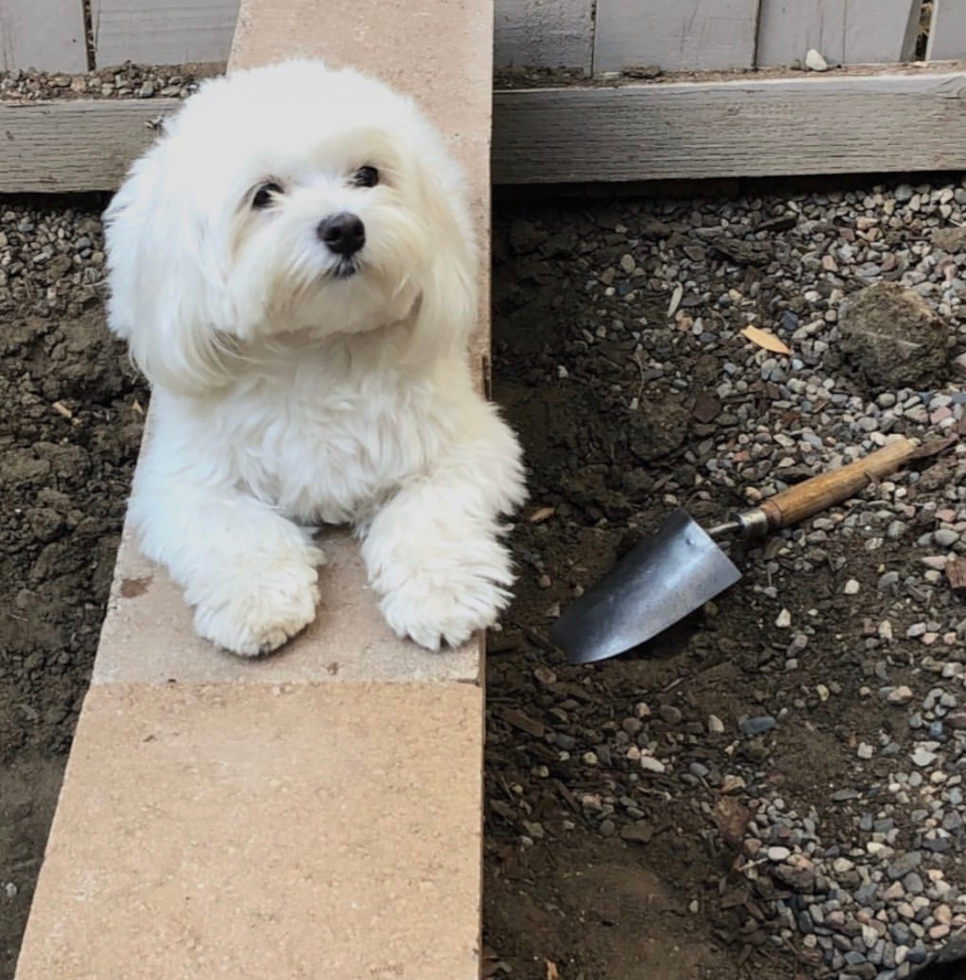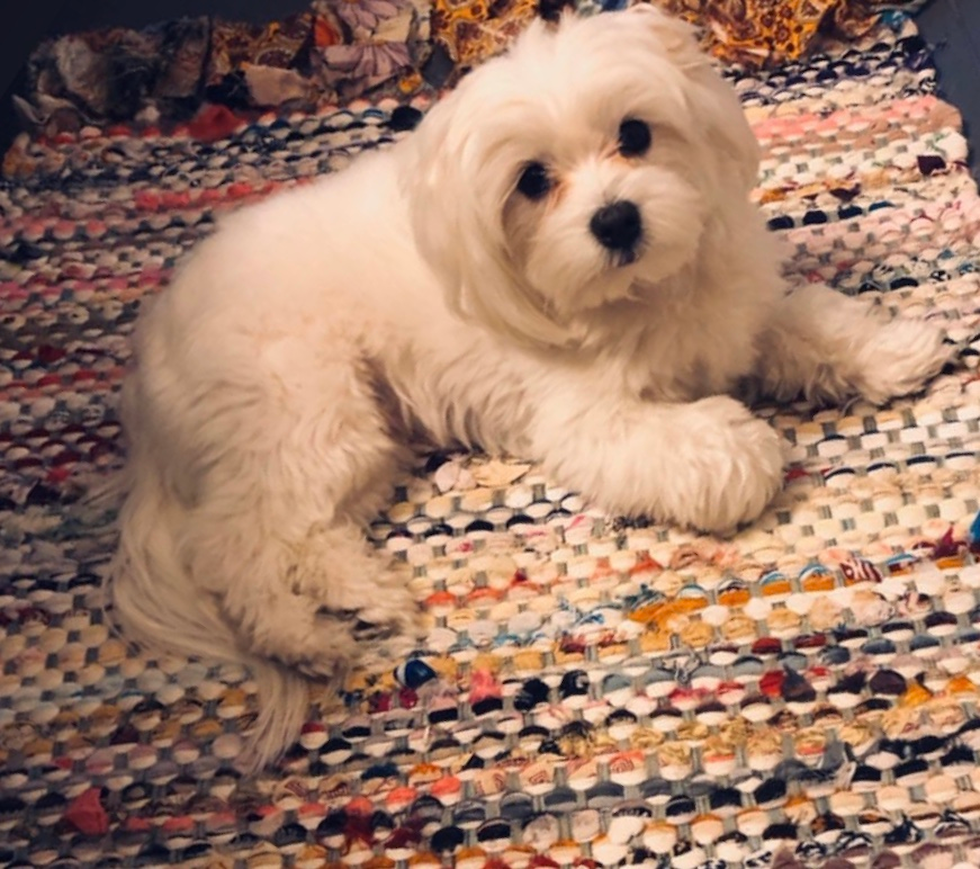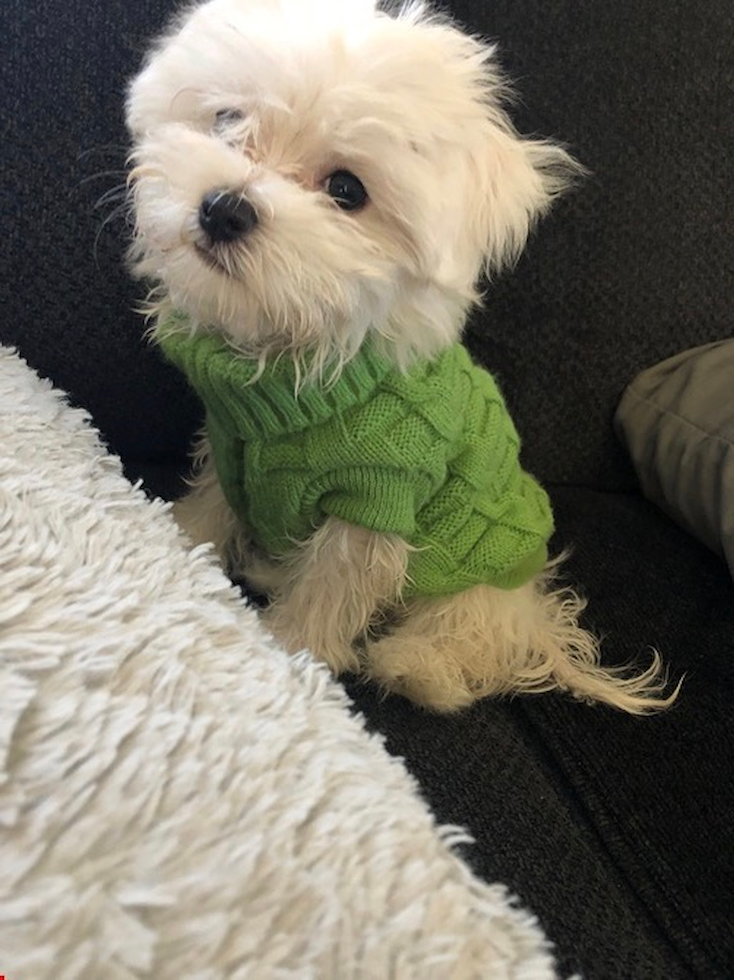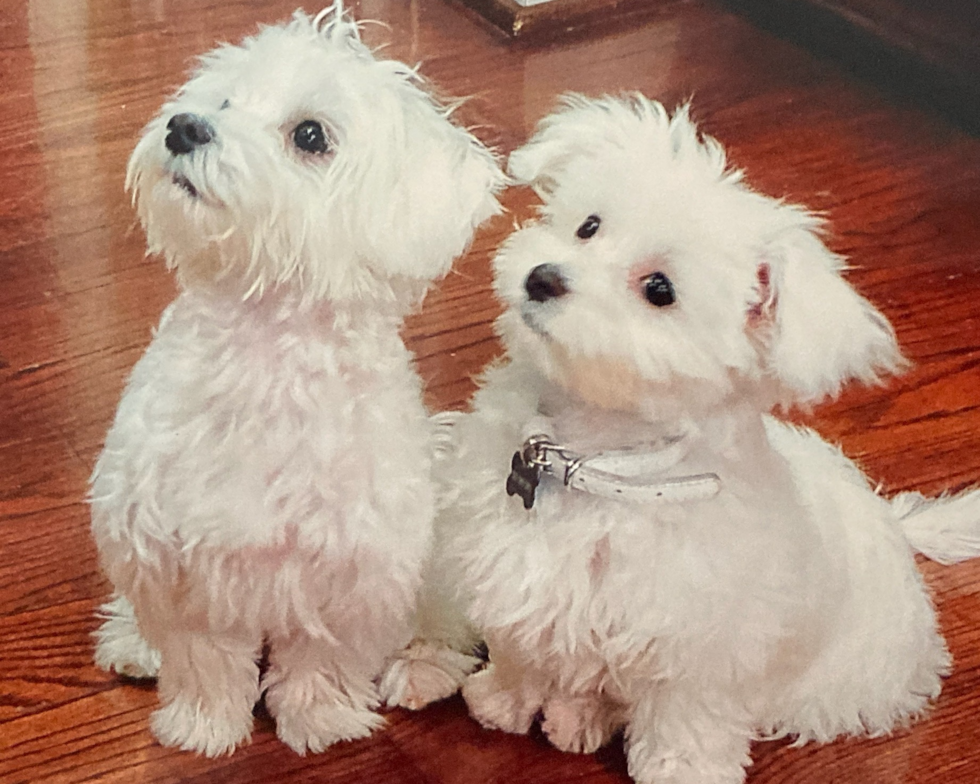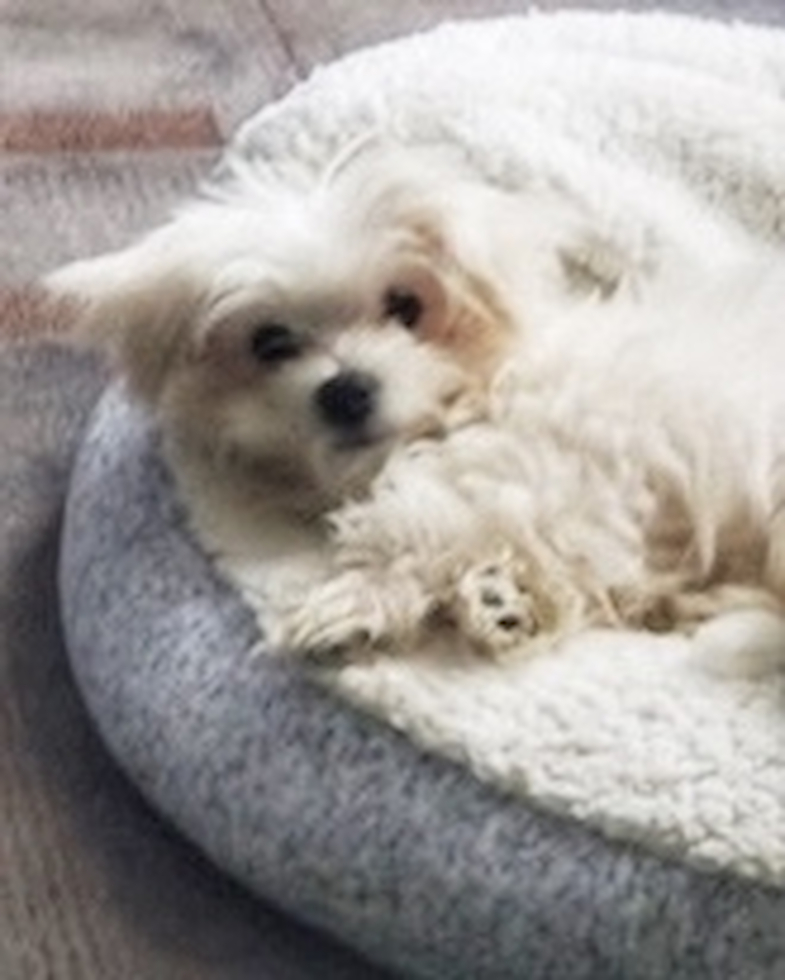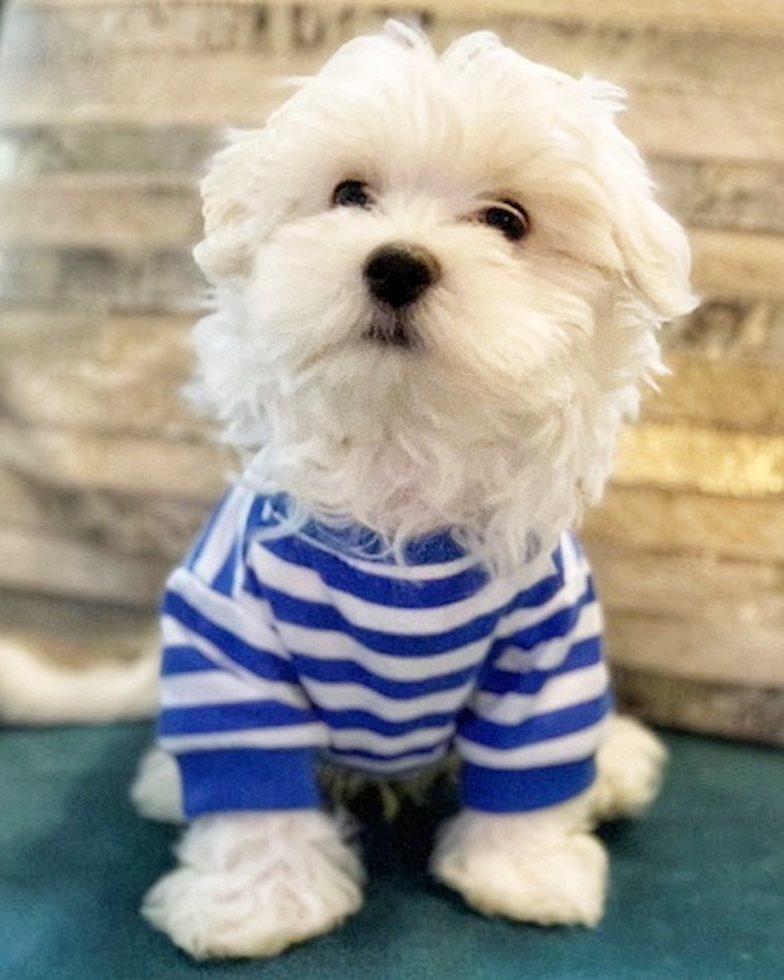
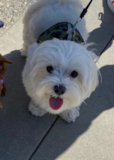
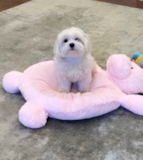
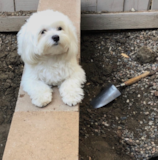



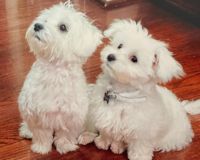
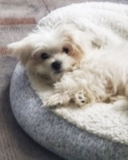
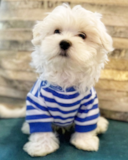
Maltese Puppies For Sale
Affectionate ~ Gentle ~ Intelligent ~ Loving ~ Playful
Partnered with the nation's most reputable Maltese breeders, Premier Pups offers the best Maltese puppies for sale. Toy and Teacup Maltese puppies for sale with nation-wide delivery. Affectionate, cuddly, joyful, and kind, the Maltese are the precious little gems of the dog kingdom. These beautiful dogs are playful, happy, fun, and full of life. They love to be surrounded by their human family and they never seem to grow old – neither in spirit nor in appearance. The adorable Maltese puppies want nothing more than to bring joy and love into their homes. They are natural-born entertainers who love to perform and perfect little cuddle buddies. They train easily, are eager to please, and they’re always happy and up for fun.
Read moreBREED INFORMATION
MALTESE
TemperamentAffectionate, Gentle, Intelligent, Loving, Playful |
|
| Adult Weight | 4-7 lbs |
| Adult Height | 9-10 in |
| Life Expectancy | 12-15 yrs |
| Rating | 5.0 ( reviews) |
| Maintenance |
Low
High
|
| Training |
Easy
Hard
|
| Shedding |
Min
Max
|
| Adaptability |
Easy
Hard
|
| Active |
Low
High
|
Maltese Puppies Characteristics:
- Hypoallergenic Maltese puppies
- Recognized by the American Kennel Club
- Our Maltese puppies for sale are healthy and happy thanks to careful breeding. They go through extensive health testing to ensure they don't suffer from any health problems
- Pure white Maltese puppy color
- Excellent for families, seniors, and inexperienced dog owners
- Maltese puppies are exceedingly bright and easy to train
- As a toy breed, the regular Maltese reaches no more than 4 to 7 pounds. Full-grown Maltese puppies generally grow between 9 to 10 inches tall. They are among the most popular toy dogs in the United States
- Bred by reputable breeders
About the breed
The Maltese puppy is one of the most ancient of the toy breeds with a history that can be traced back over two millennia. Despite their prominence throughout history, the exact origin of the Maltese dog is uncertain. Many believe the breed was developed on the Isle of Malta in the Mediterranean Sea from Spitz- or Spaniel-type dogs. Others believe they were developed in Italy, and still, others believe that they originally came from Asia and had a part in developing many of the smaller Asian dogs.
English breeders developed the Maltese puppy as we know him now. Many of the Maltese puppies for sale in the United States today trace their heritage back to English imports during the early 1800s.
The Maltese breed is recognized by the American Kennel Club and the American Maltese Association.
5 Facts About The Maltese Dog We Guarantee You'll Love
Appearance and Grooming
Their gorgeous coats are pure white, silky, and straight, reaching all the way to the ground. They don’t have an undercoat like most breeds so shedding is minimal. Because they lack this undercoat they are intolerant to many outside elements so be sure that it’s not too hot or too cold before taking them outdoors. Because of their pure white coat, staining can be very noticeable.
These beautiful pooches are a tiny dog breed. The size of a full-grown Maltese puppy can range from 9 to 10 inches. Standard Maltese weight is 4 to 7 pounds. These cute, teacup puppies have adorable floppy ears, a dark button nose, and small round eyes that are typically black. Their tails are long and fluffy, always carried upward and curled.
Our Mini Maltese puppies for sale are very small and should be handled with care. Although they may be spunky and eager to play, they should always be supervised when playing with other pets or small children.
Regular cleaning and brushing, especially around the eyes and feet can prevent discoloration and maintain a beautiful shine. Many owners put the hair on the top of their Maltese's head into a topknot to keep it away from the eyes. If you decide to do this, be sure to use coated bands that won't break the hair.
Gum disease is prevalent in this breed so regular brushing of the teeth at least two or three times a week to remove tartar buildup and the bacteria is important. Daily brushing is even better if you want to prevent dental problems, gum disease, and bad breath.
Temperament
These dogs are gentle-mannered, affectionate, and without fear. They are among the gentlest of all small sized-dogs, yet they are lively and playful as well as vigorous. Their trusting and tender personalities make them the perfect lap dog and cuddly companion.
Children and Maltese puppies make fantastic playmates. They share an equal desire to explore and try out new games, and they quickly become best friends. Very small children should be taught how to handle and care for an equally small puppy. Because of their small size, the miniature Maltese pups can get easily injured during play. It is always recommended to supervise any interaction between small children and these puppies.
Our Maltese puppies for sale are neither jumpy, shy, nor reactive. Our puppy agents interact with them daily to ensure they are well-socialized. The breed isn’t known to display aggression, but these dogs can become stubborn when overly spoiled.
Family and Companionship
These dogs thrive in a home with quiet older children or adults only who will treat them with the care they need. Due to their small frame, it is not advisable to have them in the same home as very small children as play can be too rough on such a delicate dog. They do get along quite well with other dogs and cats if they are socialized with them at an early age.
Maltese puppies have quite a reputation as therapy pets. Because their temperament is gentle and their personality balanced, they are often trained for emotional support. They have all the qualities for this job, and they are fond of attention. They are also naturally well-behaved and easy to care for, aspects that make them ideal for senior families and retirees.
One of the favorite pastimes of the Maltese is cuddling. These little rays of sunshine adore being with their owner. They love shadowing their humans and want to be involved in every family activity.
Exercise
Due to their small stature, these dogs don’t need much in the way of exercise. A brisk 20 to 30-minute walk each day and some moderate play indoors will be plenty to keep this dog happy and healthy. Regular exercise is essential for both the standard and the teacup Maltese dog as it helps keep their blood sugar levels in order.
Maltese Puppies - Training and Socialization
These puppies are people-oriented, which makes training them a fairly simple process. These dogs respond especially well to positive reinforcements such as treats, praise, and play. Like most every dog, the Maltese needs early socialization including exposure to many different people, sights, sounds, and experiences. Socialization helps ensure that your puppy grows up to be a well-rounded dog.
Often referred to as Velcro dogs, the Maltese puppies are not meant to be without their owners for long. Although they can keep themselves entertained for a few hours a day, it is recommended to train them early to become more independent. Teaching them to be independent will help both you and your puppy in the long run. It is not recommended to leave them alone for extended periods of time unless they have had proper training. Leaving them alone for more than 6 hours a day can lead them to suffer from separation anxiety.
Our Maltese puppies for sale are socialized early to ensure they have a smooth transition from our hands into their forever homes. They are healthy, happy, and eager to meet their new loving family.
Frequently Asked Questions
How long do Maltese live? The average lifespan is 12 to 15 years.
Do Maltese shed? No. The breed sheds very little if at all. They are considered one of the best breeds for people who suffer from dog allergies.
Are Maltese good with kids? The Maltese are very small dogs that enjoy play, however, they are not often recommended to families that have small children as young children may not quite understand how to be gentle, especially if left unsupervised.
Are all Maltese white? Yes. Thought they do have some tan or lemon markings around their ears the rest of their coat is fully white.
What if any healthy issues should I be concerned with? All dogs will face ailments as they grow older, just like humans. The most common health issues found in the Maltese are patellar luxation, progressive retinal atrophy (PRA), patent ductus arteriosus, portosystemic liver shunt, white dog shaker syndrome, and hypoglycemia.
Is the Maltese an intelligent breed? Yes, these dogs are highly intelligent. They love learning new skills and performing learned tricks, which makes training a pretty simple process.
How much exercise does a Maltese need? This breed requires a minimal amount of exercise each day to remain fit and healthy. Short strolls either in a park or a yard are great for these pooches.
How often do you need to groom a Maltese? This depends on the look that you’re going for. If you prefer your Maltese to have a longer coat then you’ll need to brush your little one daily as well as wash their face to avoid tear staining around the eyes. If you are keeping your dog’s coat shorter, brushing every couple of days as well as cleaning of the face each day is sufficient. A weekly bath will also keep your Maltese’s coat clean and soft.
Do Maltese come in different sizes? No. Unlike Poodle mixes, there is only one size for this breed.
Are Maltese easy to train? Like most small dogs, the Maltese is a spirited animal that tends to do things on their terms. The most effective way to train your Maltese is with proper socialization at an early age as well as practicing patience, consistency and most positive reinforcement. These dogs love to be told they did something well, so this is a big benefit in terms of training.
Where does the Maltese originate? This breed was founded on the Mediterranean island of Malta and was developed to be the companion pet of wealthy, cultured families.
What are Maltese halos? Halos are a part of the Maltese’s black points and are quite beautiful. Not all Maltese have these.
What's the best type of food for My Maltese? It's always best to feed a high quality dry dog food instead of wet canned food to help your dog maintain healthy gums and teeth. For optimal health, offer a formula with wholesome ingredients and all-natural preservatives (such as a vitamin blend and/or herbs). Avoid artificial preservatives when you can.
What breeds are similar to the Maltese? The Papillon and the Bichon Frise are both very similar to the Maltese breed.
I’ve seen advertisements for “tea cup” Maltese, what does this mean? Please be aware that there is no official separate breed called a “teacup Maltese.” This is a marketing and advertising ploy rather than a true recognized type of dog.
Are Maltese hypoallergenic? Yes. These dogs shed very little compared to other dogs. They don't produce as much dander and are a wonderful choice for those who suffer from pet-related allergies.
How big do Maltese get? The typical height for these dogs is between 9 and 10 inches.
Do Maltese bark a lot? Although they are not considered an overly-vocal breed, these dogs will alert to visitors. They make fantastic watchdogs.
How much does a Maltese weigh? The average weight for a full-grown Maltese dog is typically between 4 and 7 pounds.
Maltese Reviews
Maltese Breeders
It truly takes a special breeder to assist with nourishing and raising a Maltese puppy properly. Like people, the most critical moments in a puppy's life starts in the beginning. Providing a safe, natural, comfortable, and healthy environment for the nursing mother and her baby is essential. Only the nation's best Maltese breeders can provide the best quality of life. Here at Premier Pups, we work hand-in-hand with our breeders.
We spend consistent on-site time with our selected breeders and can undoubtedly say that our puppies come from a caring environment. The footage produced in our videos is 100% real. We take un-staged, unedited, and only authentic scenes at our breeder locations. We only align ourselves with Maltese breeders whose standards are much higher than the rest.


